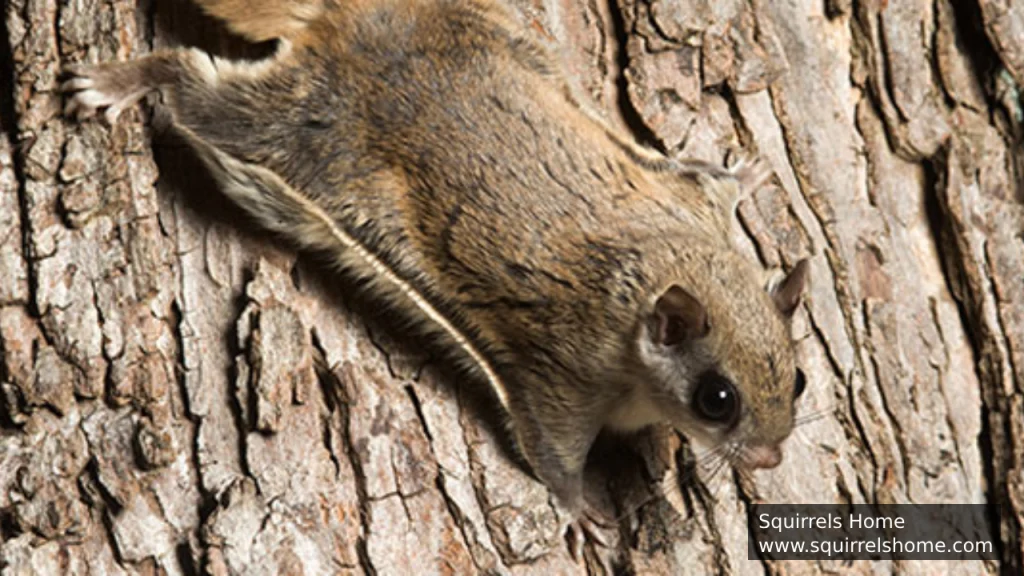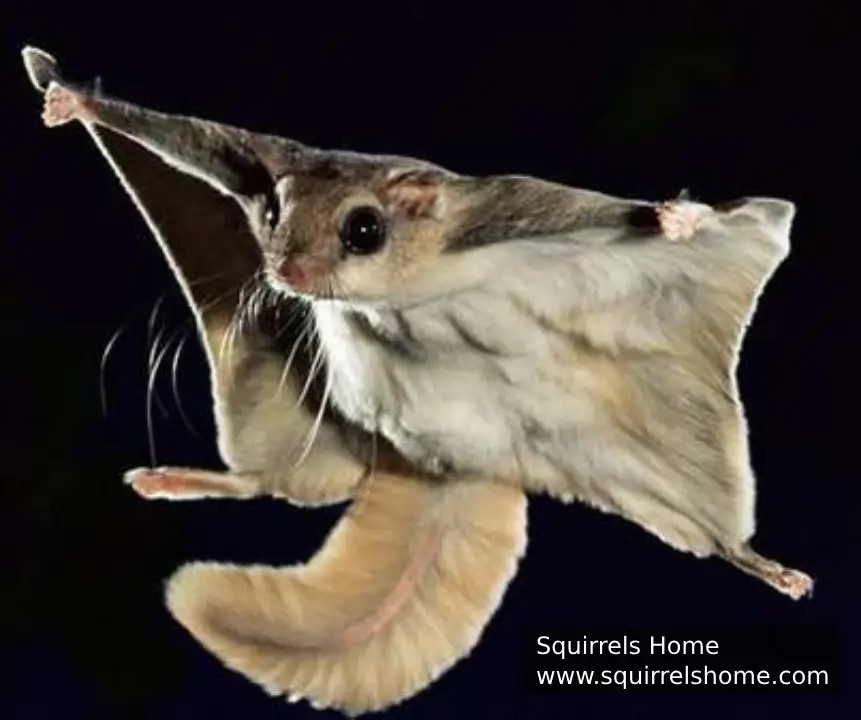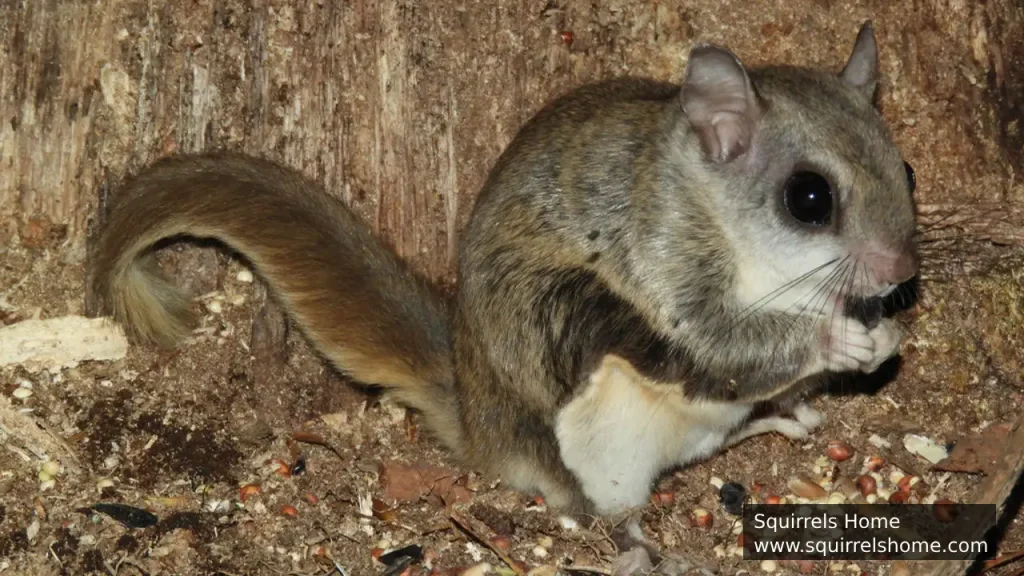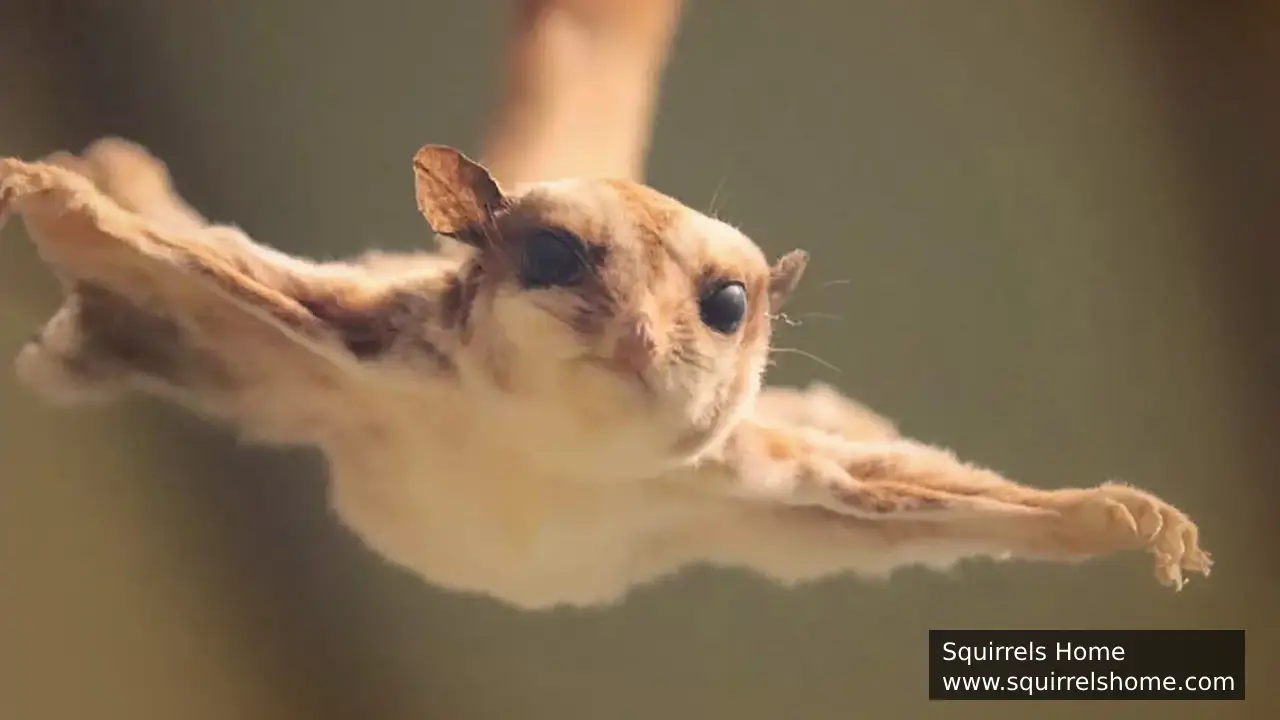Flying squirrels are small, tree-dwelling mammals famous for their ability to glide between trees. Their bodies have evolved specific features to help them live in forests and move through the air. These adaptations make them different from other squirrels and are fascinating to learn about.
Skin Membrane for Gliding

Flying squirrels have a special piece of skin called a patagium. This thin layer of skin stretches between their front and back legs. When they jump from a tree, they spread their legs, and the patagium helps them glide. This allows them to move easily from one tree to another without touching the ground.
The patagium is not just for gliding. It helps flying squirrels escape predators. If a predator is chasing them, they can jump and glide to safety. They use this skill to search for food, too, without wasting energy climbing up and down trees.
Learn more about how flying squirrels glide through the air.

Large Eyes for Night Vision
Flying squirrels are mostly active at night. They have big eyes that let them see well in the dark. This helps them find food, avoid dangers, and navigate trees in low light.
Their excellent night vision also means they can avoid predators that are active at night, such as owls. The large eyes make their faces look round and cute, but they are also a survival tool.
Flattened Tail for Stability
The tail of a flying squirrel is long and flat. It helps them balance when climbing trees and gives them control when gliding. During a glide, the tail works like a rudder on a boat, helping them steer and land safely.
When climbing, the tail helps them stay steady. It acts like an extra limb, wrapping around branches for support. This feature makes climbing and gliding safer and easier.
Sharp Claws for Climbing

Flying squirrels have sharp, curved claws that are perfect for climbing. These claws help them grip tree bark tightly, even on smooth or slippery surfaces. They use these claws to climb quickly to escape predators or reach food.
These claws are strong but not too heavy, which keeps flying squirrels light for gliding. Their ability to climb fast and efficiently is one reason they survive well in forest environments.
Lightweight Bones for Gliding
Flying squirrels have lightweight but strong bones. These bones keep them light enough to glide long distances. At the same time, their bones are sturdy enough to handle rough landings and impacts.
This lightweight skeleton, combined with the patagium, makes them great gliders. It also allows them to climb and jump with ease, making them adaptable to different challenges in their forest habitats.

Fur That Provides Insulation
The fur of flying squirrels is thick and soft. It keeps them warm, especially since they are active at night when temperatures can drop. Their fur also protects them from rain and wind.
The color of their fur helps them blend in with their surroundings. This camouflage makes it harder for predators to spot them while they rest or move through the trees.
Sensitive Whiskers for Sensing
Flying squirrels have long whiskers that help them sense their environment. These whiskers are very sensitive and can detect vibrations and changes around them. This is especially useful at night when visibility is low.
Whiskers allow them to feel their way around in the dark. This helps them avoid obstacles and find food more easily. It’s like having a built-in navigation system.
Adapted Ears for Better Hearing

Flying squirrels have sharp hearing. Their ears can pick up tiny sounds, helping them stay aware of predators and other dangers. They also use their hearing to communicate with other flying squirrels.
Their ears can move slightly to detect where sounds are coming from. This helps them react quickly to threats or opportunities in their environment.
Energy-Efficient Movement
Gliding is a very energy-efficient way for flying squirrels to move around. Instead of using energy to climb up and down trees, they can glide directly to their destination. This helps them save energy for other activities like finding food and escaping predators.
This efficient movement is one reason they thrive in large forest areas. It allows them to cover more ground without exhausting themselves.
Read about the challenges of conserving flying squirrel habitats.
Conclusion
Flying squirrels have many unique features that make them special. Their patagium, large eyes, flat tails, and sharp claws are just a few adaptations that help them survive in their forest homes. These features not only make them great gliders but also help them find food, escape predators, and stay comfortable in different conditions.
FAQs
How far can flying squirrels glide?
Flying squirrels can glide up to 300 feet, depending on their size and the height of their starting point. Their patagium and tail help them control their glide and land safely.
Do flying squirrels live everywhere?
Flying squirrels are mostly found in forests, especially in North America and Asia. They prefer areas with tall trees, which give them plenty of space to glide.
What do flying squirrels eat?
They eat nuts, fruits, insects, and tree sap. They are not picky eaters and adapt their diet based on what is available in their habitat.
Are flying squirrels endangered?
Most flying squirrel species are not endangered, but some, like the Carolina northern flying squirrel, are considered rare. Habitat loss is a common threat to them.
How do flying squirrels communicate?
Flying squirrels use high-pitched sounds and body movements to communicate. They also make noises to warn others about danger or to signal food sources.
